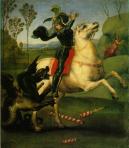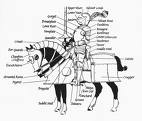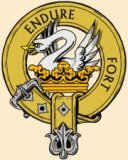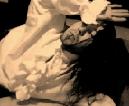 |
|
|
|
| Author |
Message |
Callum
Sponsor

Location: Upper Hutt
|
 Posted: Thu Nov 01, 2007 8:24 am Defining WMA Posted: Thu Nov 01, 2007 8:24 am Defining WMA |
 |
|
With the AS&S recently changing their training and the establishment of a number of WMA clubs in NZ under the NZSEMA banner, what we call "Western Martial Arts" seems to be gaining popularity.
I am interested in getting people's views on what defines WMA - or the other names that it goes under (HEMA and EMA). Are they all the same thing or are there subtle differences?
I am asking this because with other martial arts and activities, people apply quite a loose definition to many terms. For example "jousting" has been used to describe several different activities - from a sword fight on the ground, ring spearing, to an actual engagment between two riders, etc.
I define WMA, HEMA, EMA as all being the same thing - that is a dedicated academic study and an attempted recreation of a historically documented combat system based on this study. A lot of "WMA experts" overseas have been exposed as frauds - e.g. they claim to have studied an original source and have discovered how to faithfully re-create it, but have only studied part (if at all) of a system and made the rest up themselves.
I am wondering if people feel the same way that I do, e.g. I have a rigid approach to the WMA systems that I study and teach or are people happy with a less rigid approach?
_________________
Callum Forbes
Order of the Boar - www.jousting.co.nz
Order of the Boar Historical Foot Combat -
www.hapkido.org.nz/upperhutt.html |
|
|
 |
Colin

Location: Wellington
|
 Posted: Thu Nov 01, 2007 8:50 am Posted: Thu Nov 01, 2007 8:50 am |
 |
|
I follow the rigid approach because I want to re-construct these martial arts as accurately as I can. I feel those who mix and match, or simply make it up are dishonest. To get WMA right requires an intense amount of academic study. Not just of the fencing treatises, but also of the context that those treatises were written (social, political, cultural et cetera).
I hope WMA in this country will not become one of those names than becomes meaningless over time as people start claiming they do it, but are doing something else entirely. But then my argument over medieval martial arts indicates that dishonesty is commonly sort out characteristic, so I don't hold out much hope.
WMA refers to Western Martial Arts which encompasses the entire European martial art spectrum. This includes living traditions, ie., martial arts that never died out like Jogo do pau. Historical European Martial Arts (HEMA) refers to those Western Martial Arts that died out (no living tradition). Usually EMA refers to Eastern Martial Arts as is typically meant to be Far Eastern (karate, jui-jutsu, kung fu et cetera).
_________________
The person who writes for fools is always sure of a large audience.
- Arthur Schopenhauer
See http://www.swordsmanship.co.nz/ |
|
|
 |
Callum
Sponsor

Location: Upper Hutt
|
 Posted: Thu Nov 01, 2007 9:05 am Posted: Thu Nov 01, 2007 9:05 am |
 |
|
EMA can also mean "European Martial Arts" which is the context I originally meant it to be when I posted above.
_________________
Callum Forbes
Order of the Boar - www.jousting.co.nz
Order of the Boar Historical Foot Combat -
www.hapkido.org.nz/upperhutt.html |
|
|
 |
Chevalier

|
 Posted: Thu Nov 01, 2007 9:06 am Posted: Thu Nov 01, 2007 9:06 am |
 |
|
| Quote: | | a dedicated academic study and an attempted recreation of a historically documented combat system based on this study |
At least by the instructors - I have not met many students yet who bother reading the manuscripts in Original or translation in person and in-depth, most seem to trust their teacher to give them all information?
I am happy to be advised otherwise. I also vividly a great conversation about Italian-English translations at NAAMA with some of the Aucklanders and the difficulty of predicting moves between panels!  |
|
|
 |
Colin

Location: Wellington
|
 Posted: Thu Nov 01, 2007 9:44 am Posted: Thu Nov 01, 2007 9:44 am |
 |
|
Part of the requirements for grading in NZSEMA is a heavy academic component and it gets more demanding as one progresses. Part of the reasoning behind this is so that when the current batch of instructors are dust the schools will continue to have a healthy future and not be reliant upon "Chinese whispers" or regurgitation.
As yet these grades have not be drawn up, but is high up on my list of things to do. I also don't care to repeat the intense arguments here on grades which have already been thrashed to death on the NZSEMA fora.
So those students wanting shiny things will be required to read the original treatises or translations thereof. Those that just want to hit things, won't (gradings aren't compulsory).
_________________
The person who writes for fools is always sure of a large audience.
- Arthur Schopenhauer
See http://www.swordsmanship.co.nz/ |
|
|
 |
Gerard Kraay
|
 Posted: Thu Nov 01, 2007 1:43 pm Posted: Thu Nov 01, 2007 1:43 pm |
 |
|
AS&SS have gone to a dedicated HEMA training system, while still keeping the traditions of fun and social interaction.
I don’t have the time or inclination to go through the primary sources much at this time, so we are working off secondary interpretations, like Steven Hands interpretation of Silver and Guy Windsor LongSword and getting expert help and training from pre-eminent researchers like Colin and others.
While our approach is different to the SEMA schools I believe we all have the best intentions.
We have moved to headblow for this reason.
_________________
"The Dragon made me do it." |
|
|
 |
Scott

|
 Posted: Thu Nov 01, 2007 2:17 pm Posted: Thu Nov 01, 2007 2:17 pm |
 |
|
Probably a defining characteristic for AS&SS is that we don't claim to be using primary sources or to have a complete and conclusive syllabus which is historically sound. (edited in: Yes, this wasn't always the case. None of us are perfect)
I think most WMA/HEMA people are quite understanding of an approach like ours, and hackles only get raised when those studying from secondary or tertiary sources claim to have everything perfect.
As we have demonstrated with Colin we are very willing to be exposed to other ideas and interpretations, and we are happy to listen to those who do have the interest in, and the time invested in, the study of primary sources. |
|
|
 |
stephan
|
 Posted: Mon Nov 12, 2007 10:49 am Posted: Mon Nov 12, 2007 10:49 am |
 |
|
this question has come to my mind as well
to define any stye would require only useing the moves pportrayed in the books and would make freesparing quite hard as any moves outside of those portrayed could be called 'wrong'
personay useing the style portrayed to create a sylablls to imbue the princaples of combat into students then combating with the pricaples encourgaed from your choosen style is about as good as it gets as this is probly what our anscestors did {those who bothered/affored training}
if that makes any sense at all!
i have a love of 1.33 as it is smack in my period and is quite a brutal and diffent fighting style for dueling and small skirmishing
regards stephan |
|
|
 |
Colin

Location: Wellington
|
 Posted: Mon Nov 12, 2007 11:44 am Posted: Mon Nov 12, 2007 11:44 am |
 |
|
A fair number of the treatises are "toolbox" form. In essence you have a tool for any situation in the context they were written. Not all fit into this category, and the most famous would be George Silver's Brief Instructions upon my Paradoxes of Defence. There's little in the way of agent offence, but then the title of the MS says it all Brief Instructions. Still Silver gives enough clues in both his books.
_________________
The person who writes for fools is always sure of a large audience.
- Arthur Schopenhauer
See http://www.swordsmanship.co.nz/ |
|
|
 |
Vorschlag

Location: Auckland
|
 Posted: Mon Nov 12, 2007 5:36 pm Posted: Mon Nov 12, 2007 5:36 pm |
 |
|
Further to this most systems have a 'philosophy' of sorts which dictates how bouts are to be fought, it would be lunacy to suggest that the techniques present in the treatises are the only ones made of use of.
In fact techniques follow the 'principals' or 'philosophy' of the system, moving outside these 'principals' or 'philosophies' however would be folly for anything more than a feint, which is why instructors disagree with mixing systems etc.
base mechanics remain very similar through out most similar period systems, i.e. weight distribution, footwork, mechanics of a strike, target zones etc but differ greatly as periods progress and as martial/social/cultural/fashion developments require.
_________________
On five words hinge the entire art of the sword, in and out of armour, on horse and on foot. |
|
|
 |
|
|
 Please read the terms of use
Please read the terms of use
 Contact the Site Admin
Contact the Site Admin

